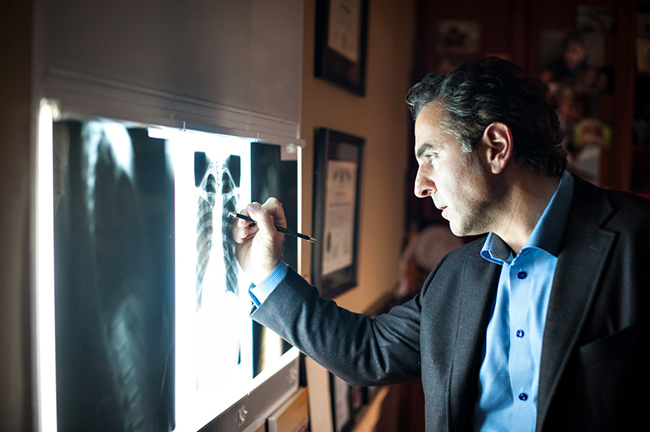 In Part 1 of this post, I discussed what diagnostic imaging is and what it does – a test that provides a doctor with a window into the body so we can diagnose and gather information about a person’s health and recommend the right treatment.
In Part 1 of this post, I discussed what diagnostic imaging is and what it does – a test that provides a doctor with a window into the body so we can diagnose and gather information about a person’s health and recommend the right treatment.
I also discussed three of the most common types of diagnostic imaging ordered by doctors – x-ray, computed tomography (CT), and magnetic resonance imaging (MRI). Here are three more tests that doctors use to pinpoint the cause of our health issues.
Diagnostic Ultrasound
While x-rays, CT scans and MRI use electromagnetic and radio waves to create images of the inside of the body, diagnostic ultrasound uses high-frequency sound waves. Also called sonography, ultrasound exams typically use a sonar device outside of the body, although some require a device to be place inside the body.
Most of us associate ultrasound with pregnancy. It enables doctors to see a pregnant woman’s uterus and ovaries and monitor the health and growth of the baby. However, diagnostic ultrasound can also be used to diagnose gallbladder disease and some forms of cancer, discover irregularities in the genitals and prostate, evaluate a lump in the breast, or assess blood flow.
Bone Scan
A bone scan is a bit different from the other forms of diagnostic imaging discussed thus far because it involves the injection of small amounts of radioactive materials, or tracers. The actual scan produces a nuclear image, which highlights parts of the body where cells and tissues are in self-repair mode. This activity indicates that there may be a disease or abnormality in that area.
A bone scan is used to identify damage or infection in the bone, identify bone cancer or cancer that may have spread to the bone, diagnose unexplained bone pain, or spot fractures caused by trauma.
In a bone scan, a tracer-sensitive camera passes back and forth over your body. The entire process usually takes less than 30 minutes. You may have to wait a couple of hours after the tracer injection for the actual scan, and the doctor may order separate scans at varying intervals. Your doctor will look for signs of abnormal bone metabolism in dark or light spots. If abnormalities are detected, different types of testing may be required to diagnose the cause.
PET Scan
Similar to a bone scan, a positron emission tomography (PET) scan involves the use of a radioactive drug or tracer. In this case, the tracer can be injected, swallowed or inhaled. A PET scan shows a doctor how certain tissues and organs are functioning. How the tracer enters the body depends on the tissues and organs being examined. A PET scan can be used to assess blood flow, oxygen intake and glucose metabolism and detect cancer, heart issues, and problems with the central nervous system, including brain disorders.
The primary difference between a PET scan and CT or MRI is that a PET scan can reveal abnormalities at the cell level. This gives the doctor the best visibility into complex diseases, including coronary heart disease, brain tumors and memory disorders. For example, a PET scan used to diagnose cancer shows the doctor how the cancer metabolizes, the effectiveness of treatment, and how the cancer could spread.
I understand that diagnostic imaging can be scary. It can be uncomfortable to feel like we’re putting our bodies under a microscope, and the natural instinct is to assume the news from the doctor will be bad.
It’s important to remember two things. First, the news isn’t always bad, and it could often be much worse. Second, diagnosing disease is the first step towards treatment and recovery. Don’t let fear of diagnostic testing prevent you from getting the help you might need.